Coding
Binary is a base-2 number system that is made up only of 0 and 1. This number system is the basis for all binary code, which is used to write data such as the computer processor instructions used every day. So, for example, we won’t see the numbers and letters as we used to, such number as 13 will be represented as 1101 in a binary system.

Hexadecimal is a base 16 system is a simplified version of binary system. A hex digit can be any of the following 16 digits: 0 1 2 3 4 5 6 7 8 9 A B C D E F. Hexadecimal numerals are widely used by computer system designers and programmers because they provide a human-friendly representation of binary-coded values. Each hexadecimal digit represents four bits, also known as a nibble, which is half a byte.
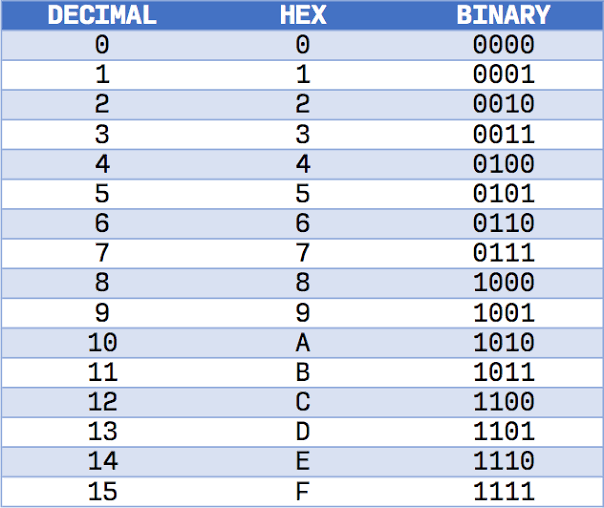
Binary-coded decimal (BCD) is a class of binary encodings of decimal numbers in computing and electronic systems, in which each digit is represented by a fixed number of bits, typically four or eight. Special bit patterns are often used for a sign or other indications.
ASCII is a character encoding that uses numeric codes to represent characters. These include upper and lowercase English letters, numbers, and punctuation symbols. It is a data-transmission code that is used by smaller and less-powerful computers to represent both textual data and noninput-device commands

Logical Operators
A logical operator is a symbol or word that connects two or more expressions such that the value of the compound expression generated is solely determined by the value of the original expressions and the operator’s meaning.
- && -> Called Logical AND operator. If both the operands are non-zero, then the condition becomes true. -> For example: (A && B) is false
- || -> Called Logical OR Operator. If any of the two operands is non-zero, then the condition becomes true. -> For example: (A || B) is true
- ! -> Called Logical NOT Operator. It is used to reverse the logical state of its operand. If a condition is true, then Logical NOT operator will make it false. -> For example: !(A && B) is true
Exclusive OR. The rational NOT operator converts fact to falsity and the other way around. It’s most often associated with Boolean values. It returns false if its single operand can be transformed to true when used for non-Boolean values; otherwise, it returns true.

Numbers
Integer is a whole number that can be positive, negative, or zero. In other words it is a number that can be written without a fractional component. Examples of integers are: -5, 1, 5, 8, 97, and 3,043.
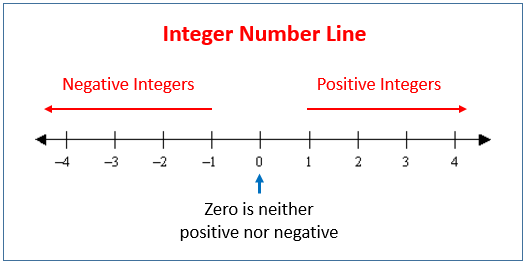
Fixed-Point refers to the corresponding manner in which numbers are represented, with a fixed number of digits after, and sometimes before, the decimal point. Fixed-point numbers are useful for expressing fractional values, usually in base 2 or base 10, where the executing processor lacks a floating point unit (FPU), as is the case for older or low-cost embedded microprocessors and microcontrollers. Fixed-point numbers are useful for expressing fractional values, normally in base 2 or base 10, if fixed-point provides greater performance or precision for the application.

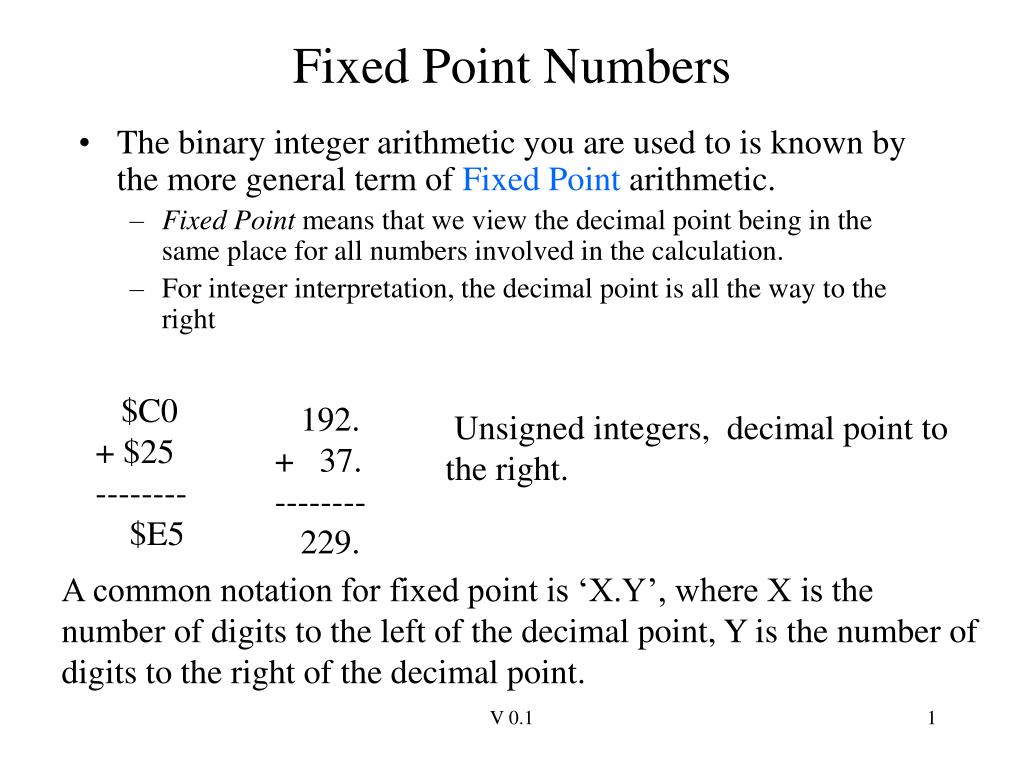
As the name implies, floating point numbers are numbers that contain floating decimal points. For example, the numbers 5.5, 0.001, and -2,345.6789 are floating point numbers.


Control Operations
An Open-Loop System is a type of control system in which the output signal has little power or influence over the input signal’s control function. In a “open-loop system”, the output signal or state is neither estimated nor “fed back” for comparison with the input signal or unit set point.

A Closed-Loop Control System is a set of mechanical or electronic devices that, without human interference, regulate a process variable to a desired state or fixed point. In comparison to open loop control systems, which require manual feedback, closed loop control systems do not.

Feedback information is used to control the operations system, by controlling the inputs and transformation mechanisms that are used to produce optimal outcomes. A cook, for example, depends on a flow of knowledge about the nature of the food from the customer to the waiter.
Stability is how a control loop reduces errors between the measured process variable and its desired value or setpoint.
Proportional Integral Derivative (PID) control, automatically adjusts a control output based on the difference between a set point (SP) and a measured process variable (PV). The set point (SP) is the target value and process variable (PV) is the measured value that may deviate from the desired value.

Proportional control is a type of linear feedback control system used in engineering and process control that applies an adjustment to the controlled variable that is proportional to the difference between the desired value (setpoint, SP) and the calculated value (PV).
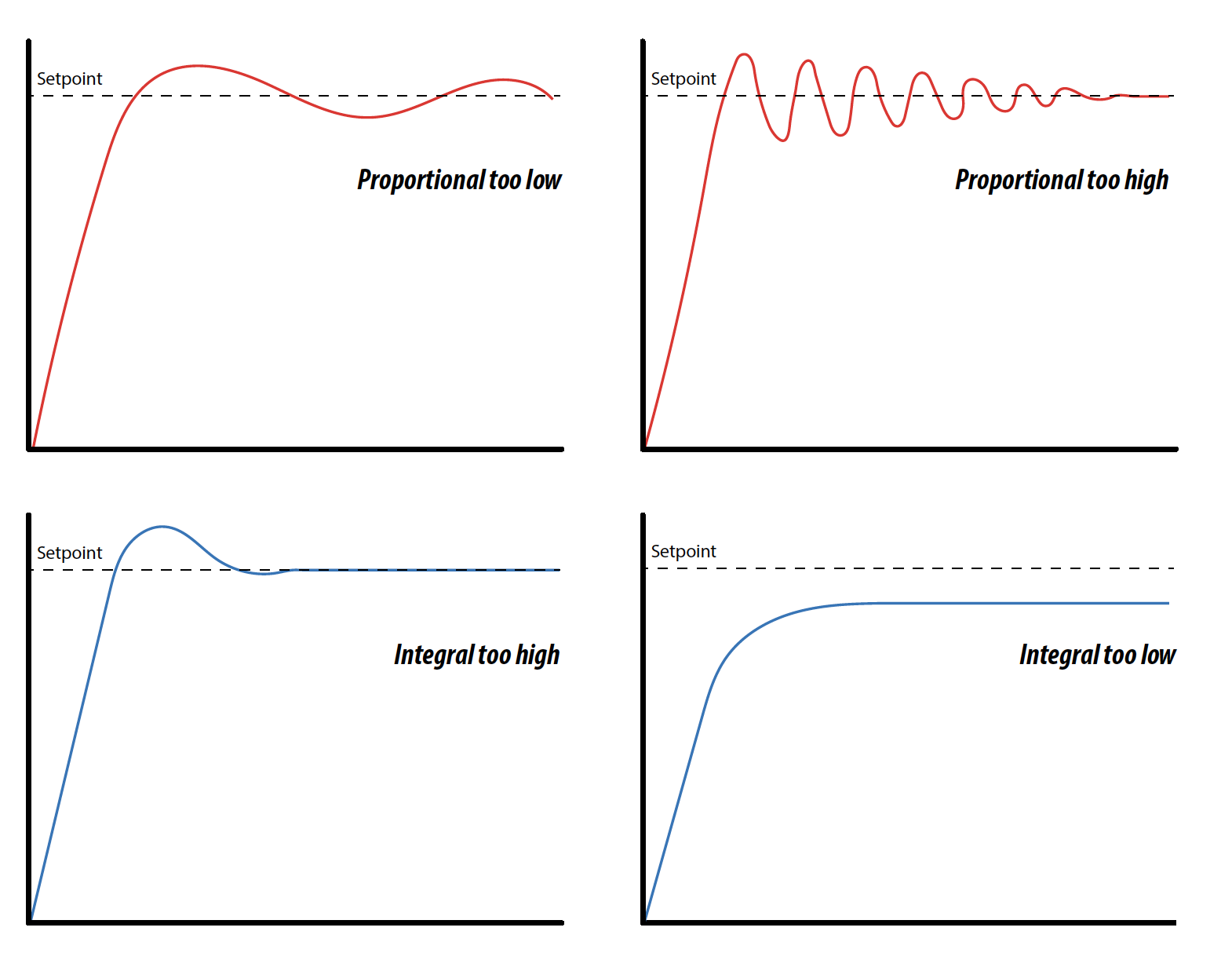
Sensor Signal Conditioning
Analogue Signal Sampling is the modification of a continuous-time signal to a discrete-time signal. A common example is the conversion of a sound wave (a continuous signal) to a sequence of samples (a discrete-time signal). A value or set of values at a given time and/or geographical location is referred to as a survey.

Digital filter is a system that performs mathematical operations on a sampled, discrete-time signal to reduce or enhance certain aspects of that signal.
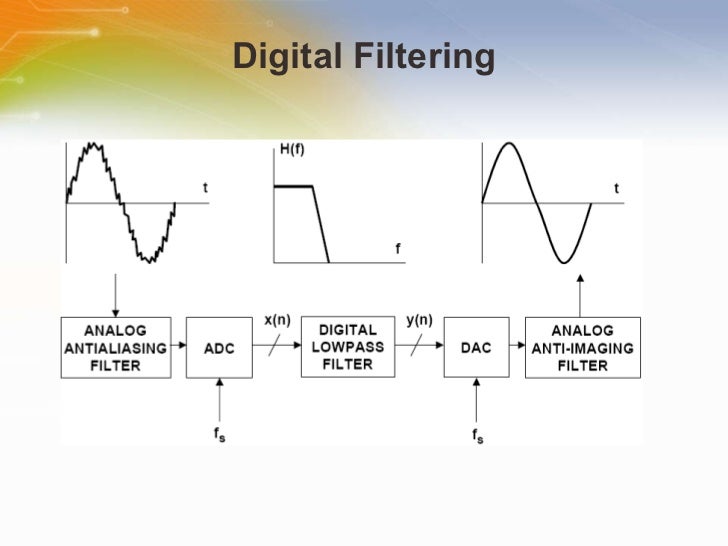
Output
Pulse width modulation (PWM) is a modulation technique that generates variable-width pulses to represent the amplitude of an analogue input signal. The output switching transistor is on more of the time for a high-amplitude signal and off more of the time for a low-amplitude signal.

The Operator’s ability to monitor the plant process is dependent on his or her ability to communicate with the control system. The Operator can respond more reliably and rapidly with a well-designed display that allows situational awareness.

Simulation
Control System Simulation is used to design and analyse control systems. To improve the control system’s accuracy, parameter optimization and tuning map techniques are used.
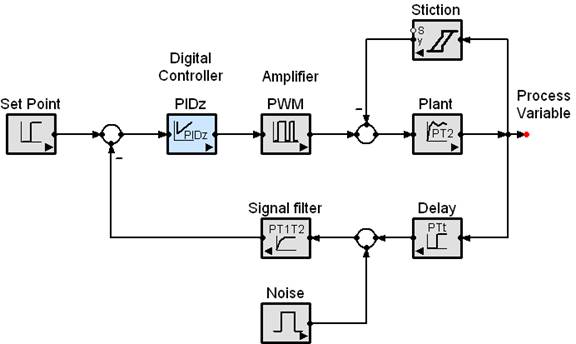
Converting the Control Model. Through this is can be meant different things, converting the simulation into a release which will work or converting your simulation files type into another type of files.